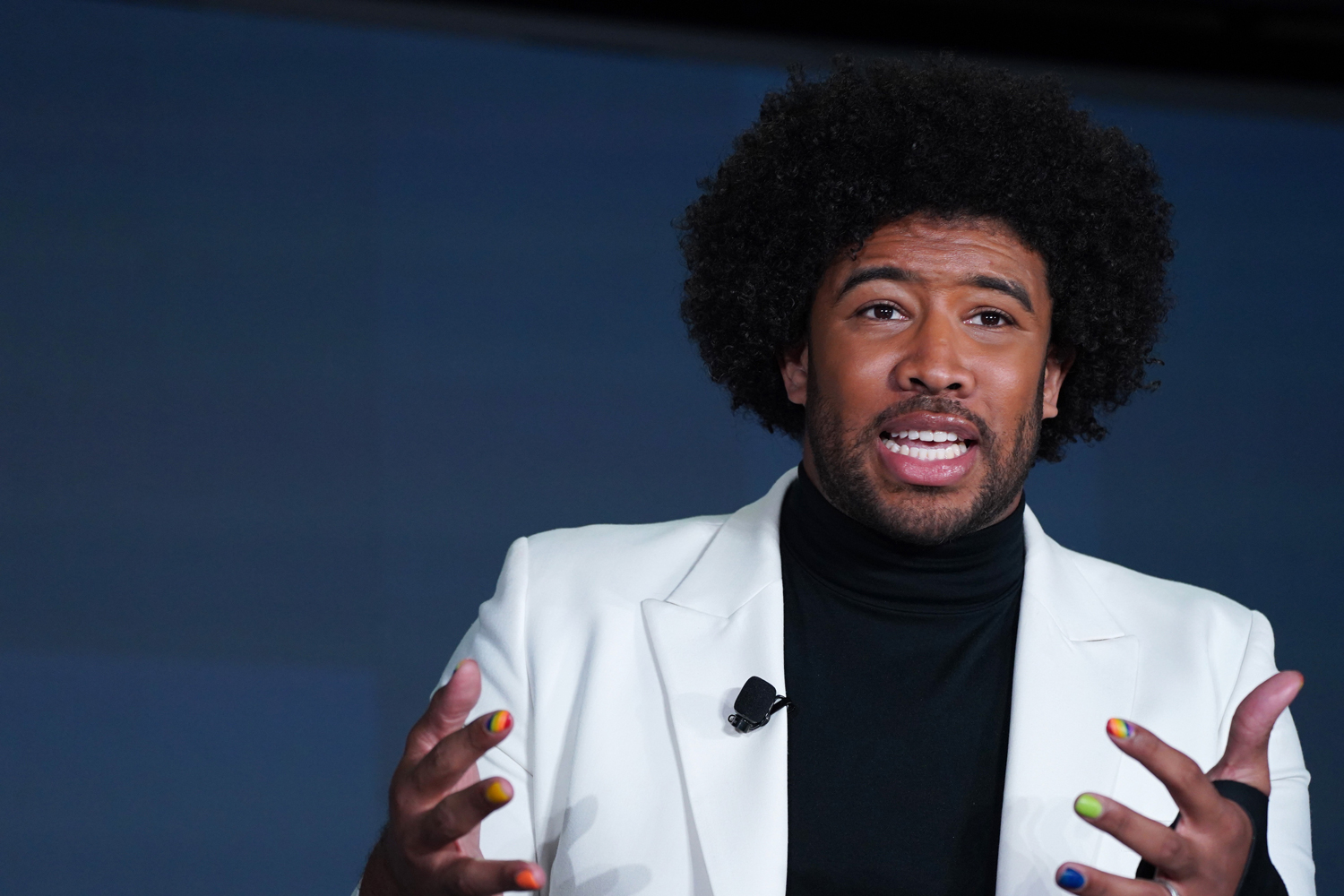It took less than 10 years for artist Keith Haring to rise to international fame using little more than outlines and primary colors. He was dead from AIDS complications by age 31.
His work forever links the AIDS crisis to his adopted home of New York City. Haring’s drawings began as subway graffiti. Eventually they came to include a few recurring images: “The radiant baby,” men embracing and flying saucers were sprinkled liberally through his art.
On the Rise
Many pop artists of his generation pointed to Andy Warhol or Roy Lichtenstein as influences. But Haring credited Peanuts creator Charles Schulz, Dr. Seuss and the Loony Tunes cavalcade of characters for his inspiration.
Haring was raised in Pennsylvania by mother Joan and his father, who also dabbled in cartooning. He left behind his religious upbringing to hitchhike across the country and paid his way by designing t-shirts to sell.
In the late 1970s, Haring left the Pittsburgh Ivy School of Professional art to move to New York City. While at school, he immersed himself in the works of Mark Tobey, Jean Debuffet, Pierre Alechinsky and the sculptor Christo. In particular, Alechinsky’s artwork provided guidance in distinguishing himself through calligraphic images.
In New York, Haring worked in the early ’80s as a busboy at the famed nightclub Danceteria. He spent free time was spent absorbing William Burroughs writings. He also studied with semiotics theorist Bill Beckley and explored performance art and the burgeoning video scene.
Read Next | This Is How To Tackle LGBTQ Financial Challenges
The Haring Style
Haring simplified images to their basic components without sacrificing essence. His ideas first came to public attention in New York’s subways, which Haring regarded as his “laboratory.” He used white chalk on a a unused billboard spaces to refine his style.
Before long, he was organizing shows at Club 57. This was perhaps his breakthrough period, as Haring became evermore productive and emerged as a celebrity in his own right. Among his friends: Madonna, Fututa 2000 and Jean-Michel Basquiat. Andy Warhol became part of his social circle, and was affectionately rendered by Haring in a series of drawings dubbed “Andy Mouse.”
As his fame grew, so did his canvases. He produced small drawings and enormous murals — many by commission. In 1986, Haring painted a mural at Amsterdam’s Stedelijk Museum and another mural, “Crack is Wack” remains a popular site along New York’s FDR Drive.
Read Next | This is Why the Equality Act Should Make You Mad
His Legacy
When Haring was diagnosed with AIDS in 1986, it initially increased his productivity. At the same time, he used his fame to talk openly about his disease and discuss safe sex. When the Lesbian and Gay Community Services Center invited his participation in a site-specific art show for their building at 208 West 13th Street, Haring created a mural called “Once Upon a Time.” It remains on view: inside the second-floor of the men’s room.
He created the Keith Haring Foundation in 1989 in order to provide images and grants while helping to fund AIDS organizations and programs for children.
Keith Haring died on February 16, 1990.
Want Metrosource LGBTQ content notifications? Sign up for MetroEspresso.

Read Next | Finding a Great LGBT-Friendly Therapist or Counselor in NYC
Last modified: August 13, 2019











